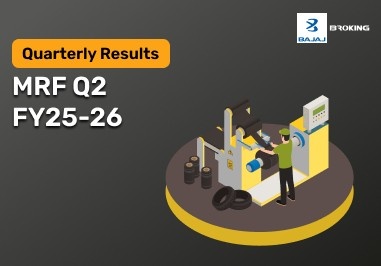Intraday trading, or buying and selling stocks on the same day, can help traders make money quickly, but it can also be dangerous. A lot of newbies get in without doing enough research or planning, hoping to get rich quick. This often causes large losses.
The majority of the day traders errors occur because they allow emotions to take over instead of doing some preparation, and following lousy advice. If traders can learn from these mistakes early, they can do well in the long run. Here are seven typical mistakes that Indian intraday traders make and easy ways to avoid them:
Mistake 1: Skipping Technical Analysis
A lot of new traders in India don't use technical analysis, which involves looking at price charts, trends, and patterns of stock movement. Instead, they trade based on assumptions or rumors in the market.
But traders are like drivers without road signs; they can quickly get lost without tools like moving averages, RSI, or candlestick charts.
Traders can figure out when to buy or sell by learning how to interpret even simple charts. This lowers the dangers and raises the chances of success. So, get started understanding the basics of charts and practice a lot. It will help you decide more quickly and wisely.
Mistake 2: Relying on Tips Instead of Self-Trading
A lot of traders get recommendations from WhatsApp groups, TV shows, or social media. Some of these tips might assist, but a lot of them are merely assumptions or fake news. If you don't think about the suggestions you get, you can purchase or sell at the wrong time and lose money.
When you do your own research, you can make smarter decisions that are in line with your trading goals and risk tolerance. You will also learn more by looking back at the choices you made. Before you do anything, always check tips against facts, news, and chart analysis.
Mistake 3: Failing to Use a Stop-Loss Order
A lot of rookie intraday traders don't employ something called a stop-loss, which is a significant mistake. A stop-loss is an easy way to keep yourself from losing too much money on a deal. You pick a price level, and when the stock reaches that level, it sells automatically. This means you may limit your losses without having to keep an eye on the market all the time.
Some traders believe they can handle the transaction without a stop-loss. They think they will know when to leave. Prices can drop in just a few seconds, though, because the market can shift very quickly. You could lose a lot of money before you even know it if you're not quick enough.
Mistake 4: Investing in Low-Liquidity Stocks
Most people want to buy or sell stocks like that. This kind of stocks is called low-liquidity stocks. It will be difficult to buy and sell quickly which is bad if it is day trading. You may buy it at a worse price and you may also be stuck in the trade.
The price may also vary in weird ways. Just stick to very known stocks like BANK NIFTY, NIFTY 50 that trade high liquidity. It will be easier and the trading will also be safer. Generally, you will be able to trade the stock very fast.
Mistake 5: Overlooking a Comprehensive Market Perspective
It is a huge mistake to ignore news about the entire market when focusing on a single stock. For example, oil prices, RBI statements, or news worldwide can positively or negatively influence trades.
If interest rates rise, bank stocks can fall practically immediately. By all means, focus on your stock, but before every trade, review overall market trends, sectors, and relevant news.
Mistake 6: Letting Emotions Affect Trading Decisions
One reason traders lose money when they trade during the day is that they let their feelings influence their choices. Fear, greed, frustration, or enthusiasm can easily take over and make you make bad decisions. A trader could sell a stock too soon only because they're frightened the price will go down, even when there are no signs that it will.
Rather than accepting the loss and moving forward, a trader will try to hang on to a losing trade hoping things will improve. Some will even try to recoup losses by entering into another trade without thought, which could lead to further losses.
Trading with your emotions is risky in so far as you lose focus on your goal and act, not in decisional terms but in guesswork.. When traders let their feelings get in the way, they stop thinking properly and make the same mistakes over and over again. That's why it's crucial to keep your cool and stick to a set schedule while you trade.
Mistake 7: Neglecting the Trading Strategy and Record-Keeping
Some traders don't have a clear plan, and they also don't keep track of their trades. This makes their trade messy and hard to make better. A smart plan tells you when to buy and sell, how much to risk, and what returns to expect.
If you write down your trades, you can learn from your mistakes and get better over time. Tip: Keep a trading journal to write down every deal you make, why you did it, what happened, and what you learnt. This also helps with taxes. Keeping detailed records and utilizing the same method every time is the key to becoming an expert at intraday trading.
Conclusion
Many Indian traders struggle with skills like technical analysis, emotional control, and risk management; thus, they find themselves making the same mistakes repeatedly and losing capital.
If you are disciplined, learn, and use a clever strategy, intraday trading can become a consistent and profitable pastime instead of a dangerous bet.















